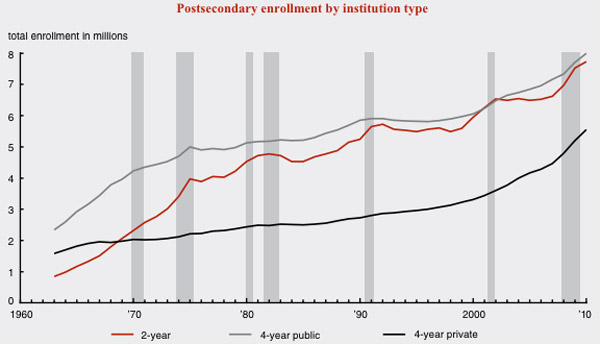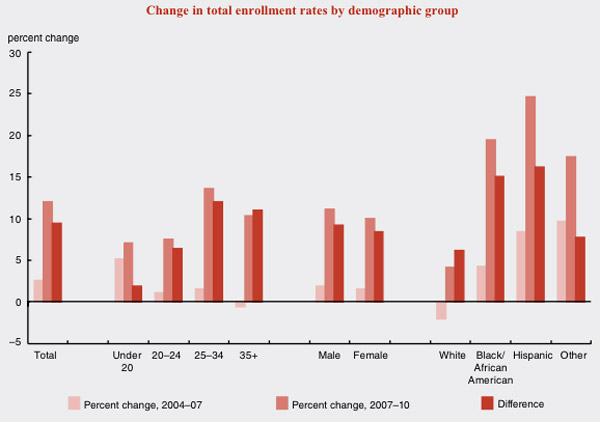The Chicago Fed has an interesting new finding (PDF): college enrollment (particularly community-college and public-university enrollment) not only spiked during the Great Recession, it almost always goes up when the economy goes down.

And the biggest increases in the past recession have come from minority enrollment:

It seems like a rational decision: there are fewer jobs, so it's a better time to be out of the workforce, and desirable jobs require more education. But does it work out in the long run? The authors calculate that, on average, it does; not as much as you might think on the individual level, :
Overall, we estimate that roughly 2.1 million more people enrolled in postsecondary education between 2007 and 2010 than we would have expected based on the change in the enrollment rate between 2004 and 2007. We find that this increase is a result of increases in the enrollment rates within labor force status groups rather than shifts in the population across groups. Using a simple cost–benefit analysis, we estimate that these individuals may experience an average net lifetime benefit of $1,500 each, or roughly an additional $3.3 billion overall.
Which is nice, but keep it in context: the Great Recession cost much more, in the trillions.



